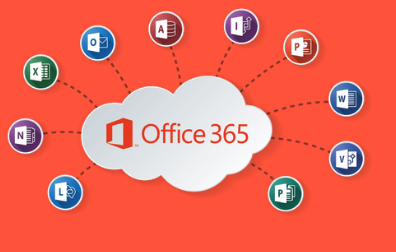SharePoint Conference Day One - steady as she goes
As an industry analyst, I get invited to "special" vendor events that provide access to selected executives and product team members. These sessions are carefully choreographed, but usually entail many useful nuggets, including a few surprises. This year's SharePoint Conference found no real surprises or big-bang announcements, but at some level this speaks to the continuing maturation of SharePoint 2010 in the marketplace.
Kurt DelBene (Microsoft President of the Office Group) fielded harsh criticism regarding the lack of "new" information or big product announcements during the conference. His response was blunt: our product teams haven't been sitting around for two years, it's just too early to share. In fact, Microsoft went out of their way to focus on what the core product does today and "remind" everyone in attendance (some 7,500 people) that SharePoint 2010 is still thoroughly relevant. Jeff Teper (VP, SharePoint Product Group) even went as far as to claim that he didn't want anyone at the conference to walk away and say "I didn't know SharePoint could do that."
On balance, this message isn't exactly a disappointment. In my experience talking about SharePoint as well as building solutions on the platform virtually everyday, it's not all that hard to miss less-used or less "popular" features. SharePoint, as I've said before, is a vast software platform that can be used to develop many different solutions. Consultants, like customers, tend to focus on those features and functions that support common business scenarios. Less frequently used features often get forgotten.
For example, most firms are familiar with Excel Services; it provides a way to surface an Excel workbook in a web interface and enable some limited editing. This service has been around since SharePoint 2007 and it works well. However, what is less used is the REST programming interface (introduced in 2010) for accessing both charts and data in that workbook. With this interface (which is merely a series of URLs), you can dynamically or statically embed an Excel chart (or other data) in a blog post, Word document or PowerPoint presentation without programming. You can also keep that embedded chart in sync with the source chart in that workbook without having to do more than update the workbook. While I've seen many customers use Google or Yahoo for creating dynamic charts, SharePoint buyers have this capability in-house and don't seem to know it.
It's easy for gurus to get frustrated by the lack of news, but for SharePoint customers, I think the messages that Microsoft is promoting for this conference are relevant, even if predictable. Many enterprises are still struggling with SharePoint 2007 or just starting to deploy SharePoint 2010. One typical SharePoint customer I spoke with has had their 2010 solution in place for only five months, while others are just starting their migration. Too many customers have multiple technologies simply sitting on the shelf; you should look at what you already own before buying the next shiny object.
A few interesting tid-bits did emerge:
- Redmond announced a partnership with WebTrends to bolster analytics. SharePoint 2010 has some basic analytics in the box, but they're just that: basic. The WebTrends deal sparks hope that we'll see higher-grade analytic capabilities not only around the typical internet-facing sites, but also deeper insight into internal behaviors as well.
- Office 365 is getting more functionality. Microsoft is finally adding support for Business Connectivity Services in the cloud. This means that customers on SharePoint Online can begin to connect their O365 SharePoint sites to external data sources, assuming that data is Web Service enabled. While BCS isn't a new feature to SharePoint, it is bringing O365 and the on-premise versions closer to parity.
- Kurt DelBene seemed to suggest that Microsoft is also evaluating different release cycles; they want to commit to a quarterly release cycle on O365 and may experiment with new ways to deliver features for on-premise implementations outside of the typical 36-month cycle. He was, however, careful to say they don't have anything formalized and are still working on the details. (We've heard this before.)
Outside of the reminders and some minor announcements, Microsoft was again promoting its ecosystem. This is something I and others at RSG have discussed at length; SharePoint has an enviable collection of independent software vendors (ISVs) that build add-ons, systems integrators that develop customer implementations, and a developer community that virtually no other platform can equal. As such, Microsoft did a bit of promoting both during the conference and through a blog post welcoming folks to the conference. With a Microsoft-reported 700,000 developers and more than 1,000 ISV solutions (read: add-ons), the momentum seems to continue to build around the product. That post also included some interesting statistics on the customer base, including a breakout of pure SharePoint 2010 licenses.
While pure-play vendors will continue to outshine SharePoint in specific functional categories, the platform continues to maintain a unique market position based on the breadth of functionality and depth of its ecosystem. SharePoint 2010 can be a viable answer for many different problems, but there's still much to be learned about the platform before we all start musing about SharePoint 2013.




